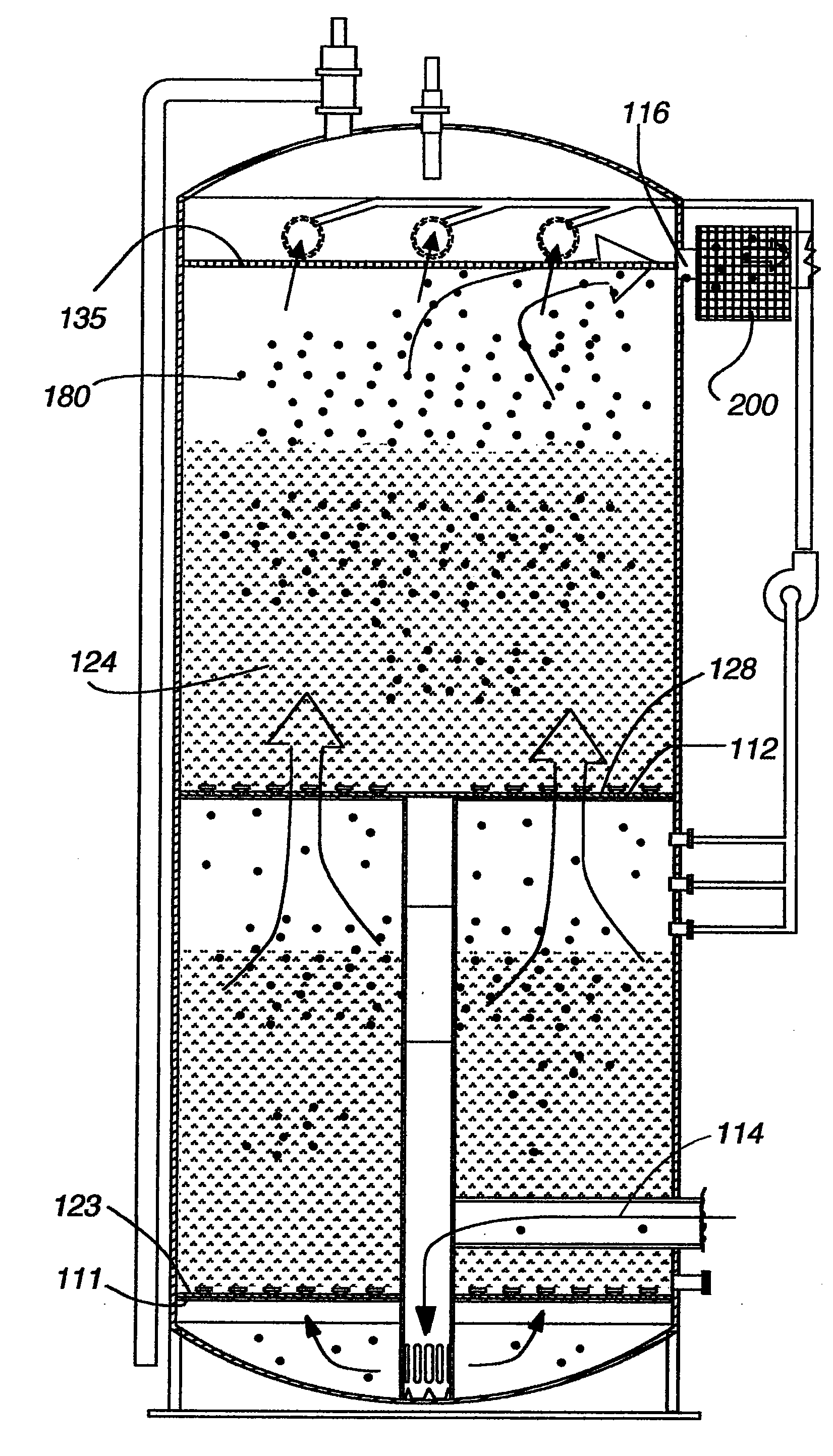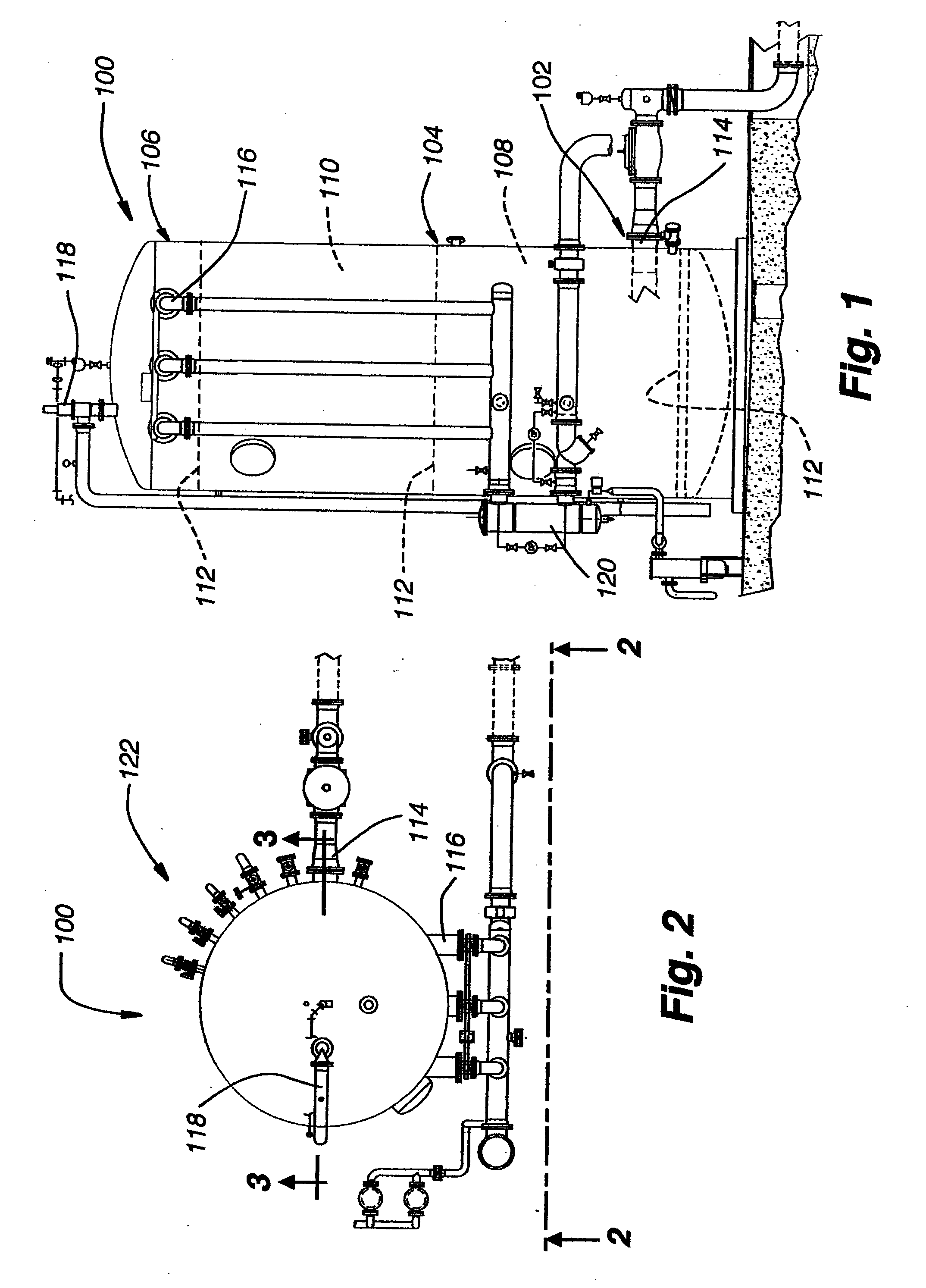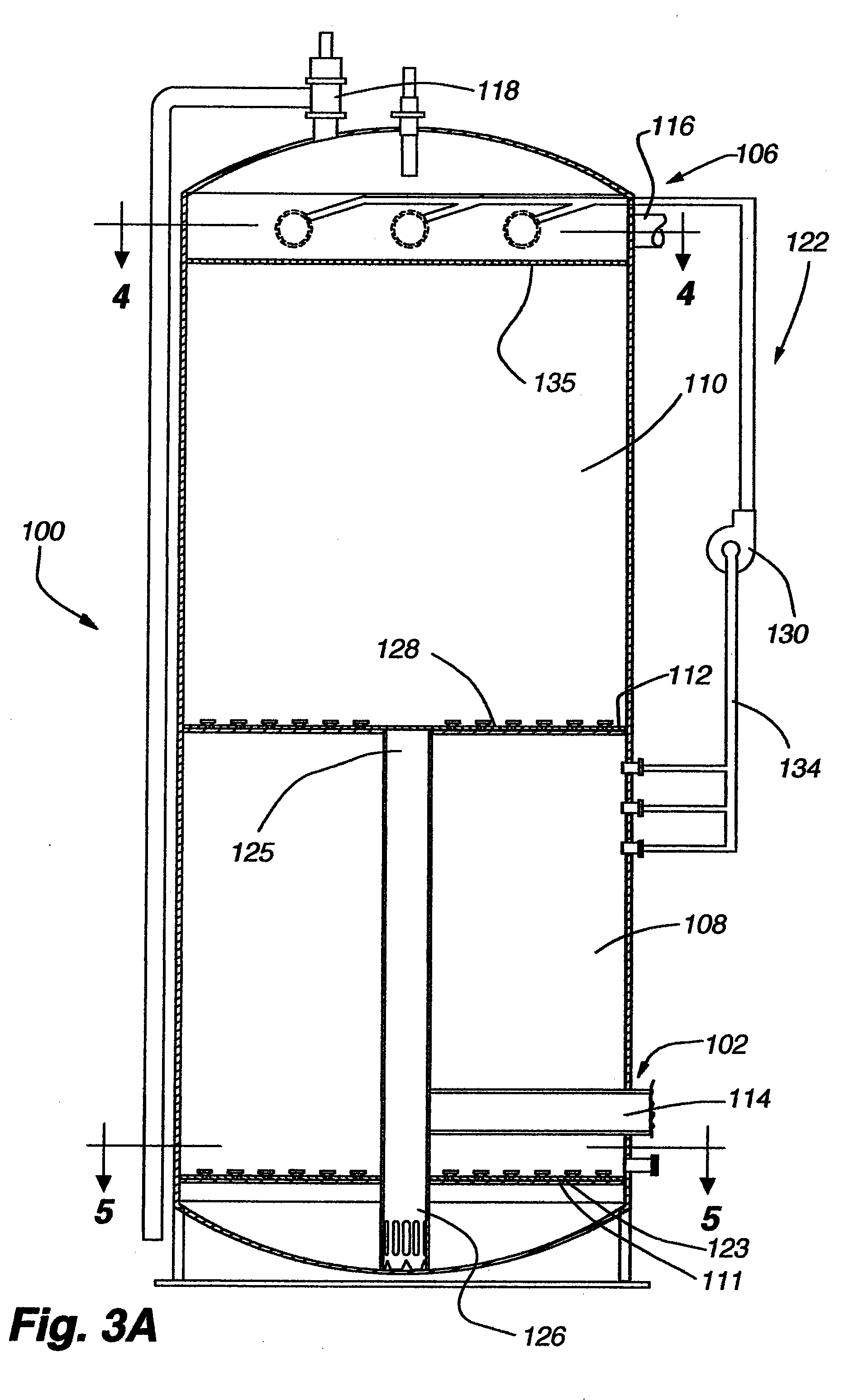Methods for Purging Absorptive Materials Used in the Removal of Contaminates from an Aqueous Medium
a technology of absorption materials and aqueous medium, which is applied in the direction of water/sewage treatment by ion exchange, separation processes, ion exchangers, etc., can solve the problems of clogging the large volume housing units with suspended particulates in the aqueous medium, corresponding deterioration of water quality throughout the world, and contaminates naturally present. , to achieve the effect of limiting back pressure build-up and significant cost and time benefits
- Summary
- Abstract
- Description
- Claims
- Application Information
AI Technical Summary
Benefits of technology
Problems solved by technology
Method used
Image
Examples
examples
Purging Column Limits Particulate Build-Up In Uranium Removal System
[0083]A uranium removal system was prepared for treatment of an aqueous medium source located in Dinwiddie, Va. The system was tested for the ability to treat and process a continuous flow of water for the removal of uranium. A pair of single stage, fluidized bed vessels rated for 150 pounds / in2 operating pressure were provided to the Dinwiddie drinking water supply. The vessels were designed to handle: 80 gallons per minute (gpm), having approximately 80 ppb uranium, and an empty bed contact time of 3.7 minutes at a hydraulic loading rate of 8.3 gallons per minute per square foot. The vessels were connected to each other in series and both had an up-flow design, see FIGS. 1-8.
[0084]In general, the systems of the present Example include Schedule 10 304L stainless steel piping designed to permit feed, discharge and bypass piping connections into the distribution system. The pipe was flanged and welded as required for...
PUM
 Login to View More
Login to View More Abstract
Description
Claims
Application Information
 Login to View More
Login to View More - Generate Ideas
- Intellectual Property
- Life Sciences
- Materials
- Tech Scout
- Unparalleled Data Quality
- Higher Quality Content
- 60% Fewer Hallucinations
Browse by: Latest US Patents, China's latest patents, Technical Efficacy Thesaurus, Application Domain, Technology Topic, Popular Technical Reports.
© 2025 PatSnap. All rights reserved.Legal|Privacy policy|Modern Slavery Act Transparency Statement|Sitemap|About US| Contact US: help@patsnap.com



